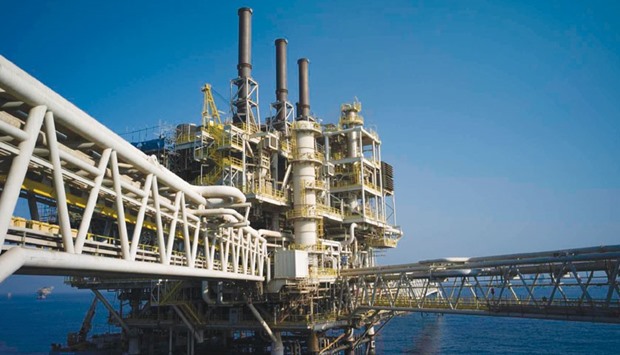Occidental Petroleum (Oxy) is “very happy” with its core areas of operation in Qatar besides Abu Dhabi and Oman and “wants to focus and stay very diligent” here, said Vicki A Hollub, Oxy President and chief operating officer.
“We are not interested in going to Iran,” replied Hollub in an exclusive interview when Gulf Times asked whether the end of Iran sanctions will open gates to energy companies that are keen to enlarge their markets.
“The reason why we are not (going to Iran) is because we are still very happy with our core areas here in the Middle East – in Qatar, Abu Dhabi and Oman,” said Hollub, who was on a brief tour of Qatar recently.
“We still think there are opportunities working in these core areas for us to help these governments, national oil companies and communities. So, this is where we really want to continue our concentration,” the Houston, Texas-based Hollub said.
Oxy’s board of directors plans for Hollub to succeed Stephen I Chazen as CEO of Occidental after a thorough transition period, according to the company’s website.
Occidental is Qatar’s second largest offshore oil producer, where it operates Idd El Shargi North Dome (ISND), Idd El Shargi South Dome (ISSD), and Al Rayyan (Block 12).
Occidental also participates in the Dolphin Gas Project, the premier trans-border gas project in the Middle East, which supplies natural gas produced from wells offshore Qatar to customers in the UAE and Oman.
Occidental has a 24.5% undivided interest in the development and production of the project in Qatar’s North Field, one of the world’s largest gas reservoirs. The Dolphin Gas Project, which became fully operational in 2007, has had a significant impact in the region and is expected to be a steady contributor to Occidental’s financial performance for several years.
For more than two decades, Occidental has worked in close cooperation with Qatar Petroleum (QP) to develop and operate offshore oilfields.
Oxy started production in Qatar in 1994 (from the field it was assigned at that time) at less than 20,000 bpd, Hollub said.
In less than two and a half years, production was ramped up to 140,000 bpd, which she described as a “significant ramp up”.
“After that we have been able to keep production above 100,000 bpd. Our goal is to continue to keep the production above 100,000bpd,” she said.
After assuming operation of ISND in 1994, Occidental increased production through extensive horizontal drilling, waterflooding and multilateral production. It continues to improve recovery rates and add new reserves through state-of-the-art reservoir characterisation processes and technical development programmes.
On how she assessed Dolphin Gas Project, Hollub said, “It is a great project. It was very well designed, very well executed, built and is running very efficiently now. It has been a great project…generates a good cash flow for the owners and does a really good thing for Qatar to get their gas out and for Abu Dhabi and Oman to receive it.”
She was all praise for Qatar and Abu Dhabi for cooperating and collaborating on the Dolphin Gas Project.
“That took some regional cooperation…and some agreement, in collaboration between Abu Dhabi and Qatar to make it happen. I applaud these kinds of things when they can happen, and when companies can be a part of that. We always feel good when we are part of a project that we know is going to be beneficial to an area where we operate. Because what we are always striving is to be the ‘partner of choice’ in all the areas where we operate and the companies that partner with us.”
On Oxy’s relationship with Qatar Petroleum, Hollub said, “We have a very professional relationship with QP. We pride ourselves as being a company that does the best work possible for our partners. And we do share our thoughts and ideas with QP.”
Oxy Qatar has also initiated several programmes to support employee development including a “Qatarisation Succession Planning Programme,” which helps with career plans. Many of Oxy Qatar’s employees are nationals.

Occidental-operated PS-1 complex, offshore Qatar. Occidental is Qatar’s second largest offshore oil producer. PICTURE: Oxy


